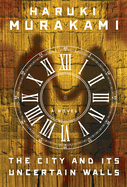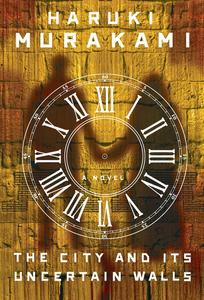
 With The City and Its Uncertain Walls (translated from Japanese by Philip Gabriel), Haruki Murakami returns to a world first created more than 40 years ago in a novella of the same title. That walled city will also be familiar to fans of the author's Hard-Boiled Wonderland at the End of the World, but prior familiarity is not required to appreciate the mesmerizing new fiction from the gifted and enigmatic Murakami (First Person Singular; IQ84; Wind/Pinball).
With The City and Its Uncertain Walls (translated from Japanese by Philip Gabriel), Haruki Murakami returns to a world first created more than 40 years ago in a novella of the same title. That walled city will also be familiar to fans of the author's Hard-Boiled Wonderland at the End of the World, but prior familiarity is not required to appreciate the mesmerizing new fiction from the gifted and enigmatic Murakami (First Person Singular; IQ84; Wind/Pinball).
Part One opens as the young narrator describes walking barefoot with his girlfriend at the edge of a shallow riverbed, addressing the girl directly: "At that time neither you nor I had names.... The two of us sat there, side by side, on the riverbank of a nameless world." All of Part One uses this second-person address, the girl a constant presence in the story even as the narrator describes the way she one day disappears, leaving him confused and bereft. He goes on to college, gets a job, and maintains a comfortable existence into middle age. But the memory of the girl and the high-walled city they imagined together haunts him until the day he finds himself outside the wall, giving the Gatekeeper permission to remove his shadow and wound his eyes, allowing him to enter the city to work as a Dream Reader.
Part One bounces between two worlds--the reality of the narrator's youth, when he and the girl exchange letters and fall in love; and the time when the much older narrator lives in the walled city. The rest of the book plays similarly with questions of reality and its construction: "Different versions of reality mixed together, different choices became intertwined, out of which a composite reality--or what we come to understand as reality--took shape." Ultimately, the narrator agrees with the statement, "Real or fake, that doesn't really matter. Facts and the truth are two different things."
Murakami tracks the novel's evolution in an afterword, explaining that he began reworking the story just as the Covid-19 pandemic lockdowns rolled across the globe. His isolation during that time "might be significant," Murakami writes. "Or maybe not. But I think they must mean something. I feel it in my bones." This confident ambiguity infuses each of the three distinct yet connected sections of The City and Its Uncertain Walls, evoking an uncanny, dreamlike state. For those willing to engage the ambiguities, Murakami's latest will not disappoint. --Sara Beth West, freelance reviewer and librarian
Shelf Talker: Haruki Murakami's The City and Its Uncertain Walls employs a languid tone and dream-like exploration of memory and the paths taken in life, asking readers to consider what is real.

